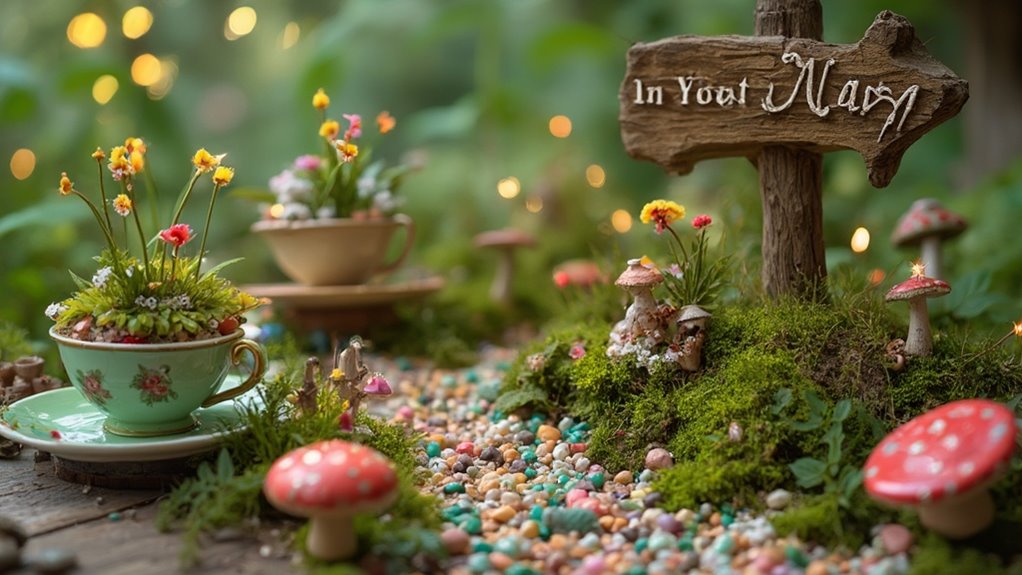We can create enchanting mini fairy gardens on the cheap using old teacups, mason jars and other repurposed containers. Collect natural materials, such as twigs and stones, and bring the kids in to make their own ornaments. We can incorporate found objects for added whimsy, choose inexpensive plants, design multi-level gardens with rocks. And, of course, battery operated ambient lighting to create that touch of magic. Keep reading — there are more fairy garden ideas to come!
Table of Contents
Key Takeaways
- Repurpose old containers like teacups or mason jars for unique and budget-friendly fairy garden bases.
- Use natural materials such as twigs and stones to create decorations and pathways without spending money.
- Involve kids in crafting with recycled materials like bottle caps for fun and economical fairy garden elements.
- Collect and incorporate moss from your surroundings to enhance the garden’s natural look at no cost.
- Organize swap events with friends to exchange miniature decorations, maximizing creativity while minimizing expenses.
Repurpose Containers for Unique Gardens
One of the best and easiest ways to begin thinking about making a mini fairy garden is to use containers you have at home. Thrift store finds, like old teacups, mason jars and wooden crates, can provide affordable character.
In larger gardens, we have used vintage suitcases and rusty wheelbarrows as quirky bases to add a bit of character to our designs. Just remember to double check that there are drainage holes, or we can always drill our own to avoid our plants from being waterlogged.
For smaller scenes, shallow bowls or dishes are ideal for setting down miniatures and mini plants. Let us personalize our fairy gardens!
Use Natural Materials for Decorations
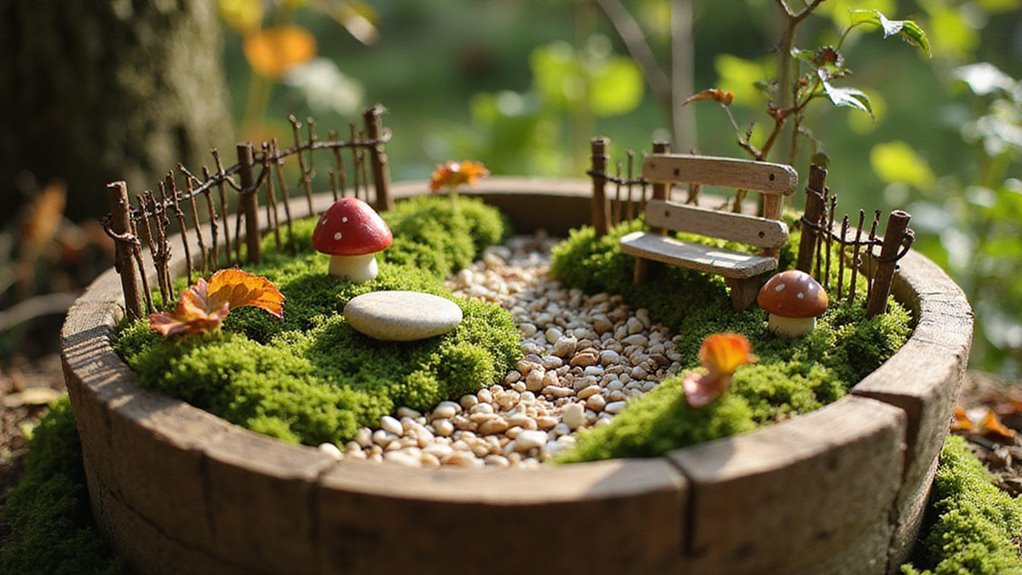
While making our mini fairy gardens, incorporating organic materials can definitely enhance our fairy garden creations and ground them to the splendor of nature.
Collect twigs, pine cones and leaves found in nature to create magical fairy houses and pathways. Use small stones and pebbles for decorative edging, and moss for texture and moisture retention.
We can make chairs and tables from acorns and dried flowers; we can personalize our gardens. For some whimsy, quite a lot of colorful detail, such as with seashells or dried petals, let’s make our interiors into magical realms in celebration of nature’s beauty.
Involve Kids in Crafting Ornaments
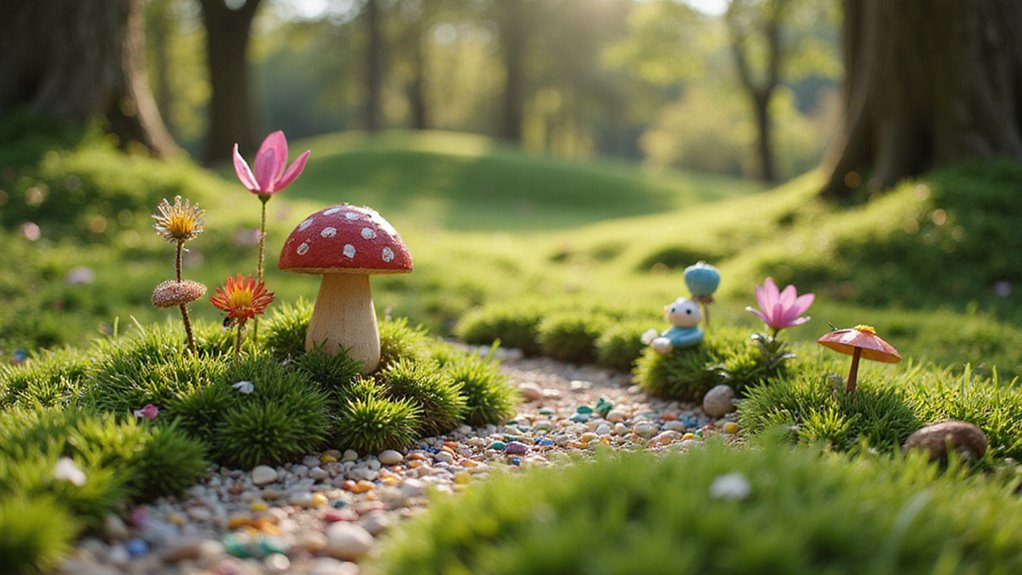
Making ornaments with kids is a fun way to get everyone involved in creating our mini fairy gardens. It inspires them creatively, but it also connects us to nature.
Here are some fun ways to get started:
- Encourage kids to paint colorful rocks for decoration.
- Make tiny ornaments from scraps such as bottle caps and twigs.
- Have a craft day to make themed decorations like fairy doors.
Incorporate Found Objects
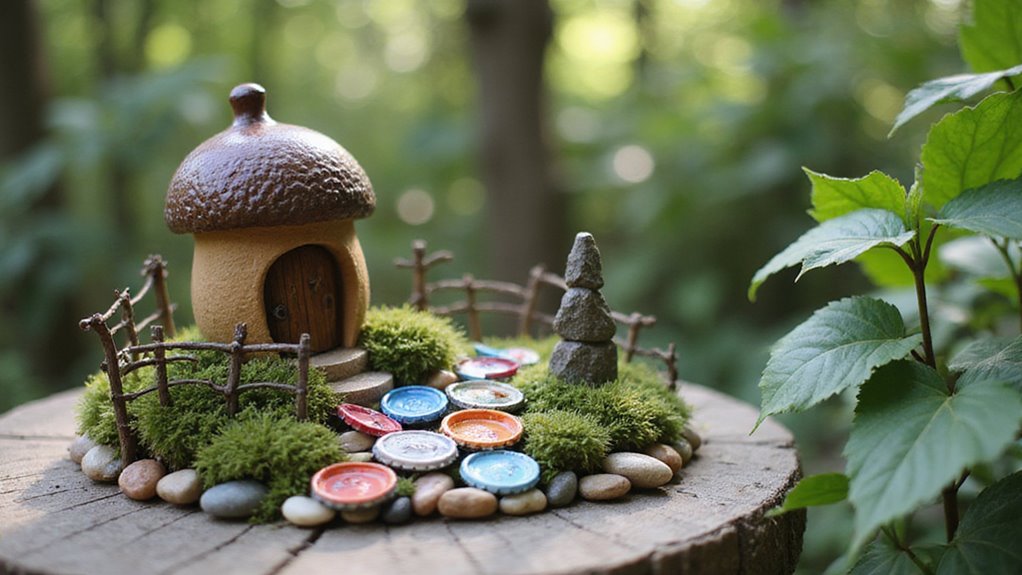
As we enter the magical realm of mini fairy gardens, there is no need to spend a fortune on items that can enhance our works.
Things like acorns and twigs and pebbles can be made into playful decor. We used old bottle caps to create fun tables or chairs, which adds to the whimsy of our garden.
Pathways can be made of seashells or smooth stones; mini houses can be fashioned from cardboard or scraps of wood.
Old buttons or bits of fabric can be used to create colorful accents, injecting personality into our gardens.
Choose Budget-Friendly Plants
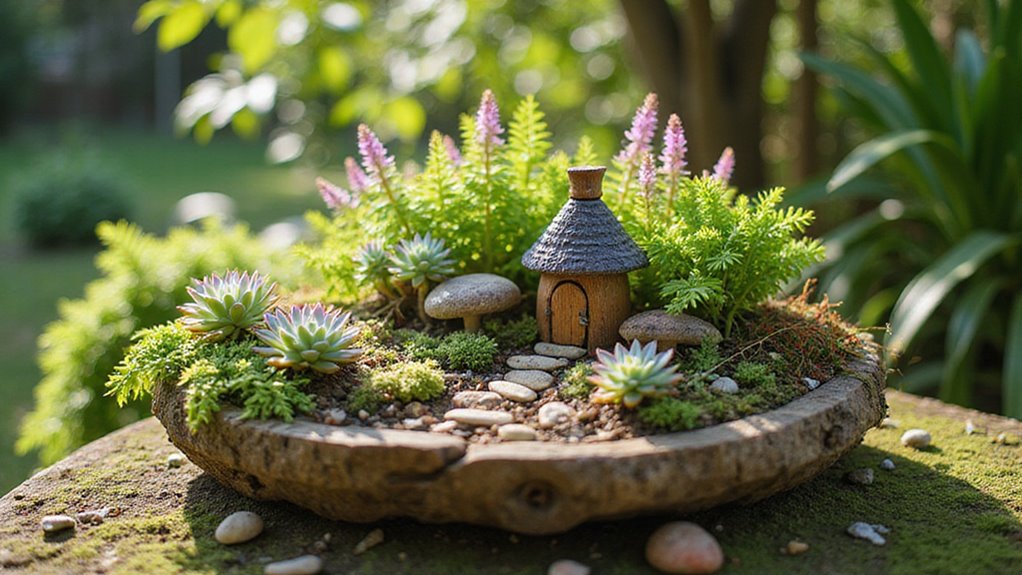
Once we’ve populated our tiny fairy gardens with found objects, it’s time to consider the plants that will animate our magical scenes.
Using inexpensive plants, as opposed to expensive plants, is good for our bank accounts and better for our designs.
Consider:
- Drought-tolerant plants such as hens and chicks or echeveria.
- Hardy sedums, such as Coral Carpet and Little Missy, for texture and coverage.
- Trailing succulents such as string of pearls, for whimsy.
Create Miniature Pathways With Pebbles
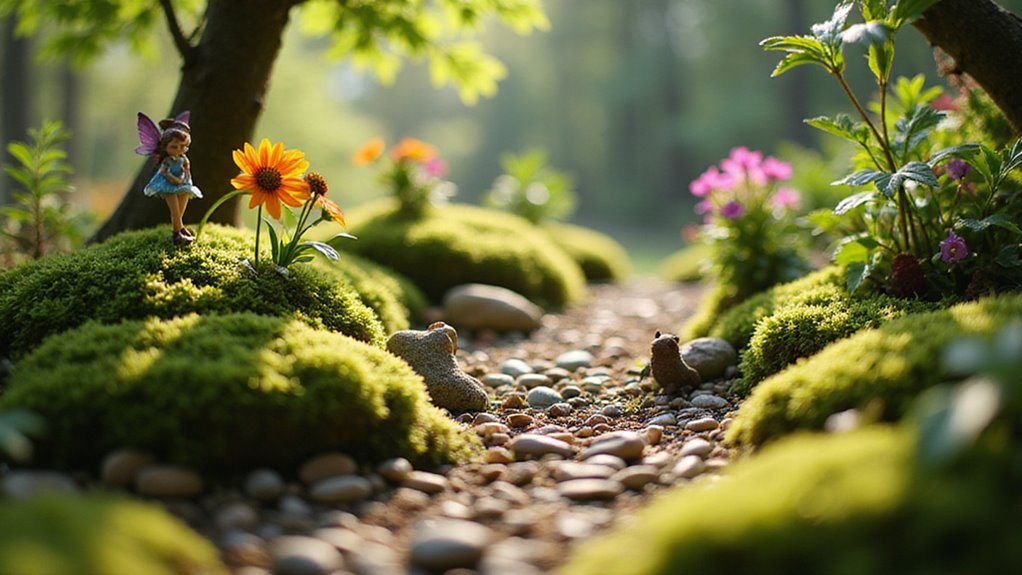
Using pebbles to create magical little paths can change our fairy gardens into wondrous places.
Pebbles can be used to easily create miniature paths, while flat stones or river rocks can be used to lead the eye through our designs. Let’s cement them in with a mix of sand and earth.
Use Twigs for Fences and Structures
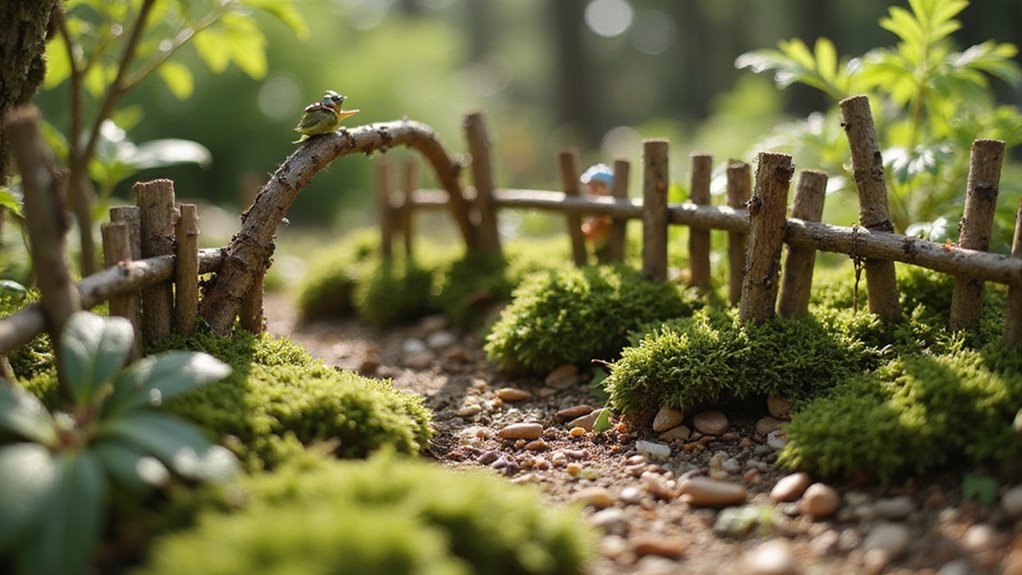
Twigs are fun, and resourceful, for building delightful fences and structures in our fairy gardens.
Twigs are free and can be easily gathered in our backyards or nearby parks.
Let’s consider these tips:
- Trim the branches to the same length for a tidy rustic fence.
- Securely attach twigs using hot glue or twine for gates and arbors.
- Use twigs of different sizes to form a multi-tiered structure.
Make DIY Fairy Figurines
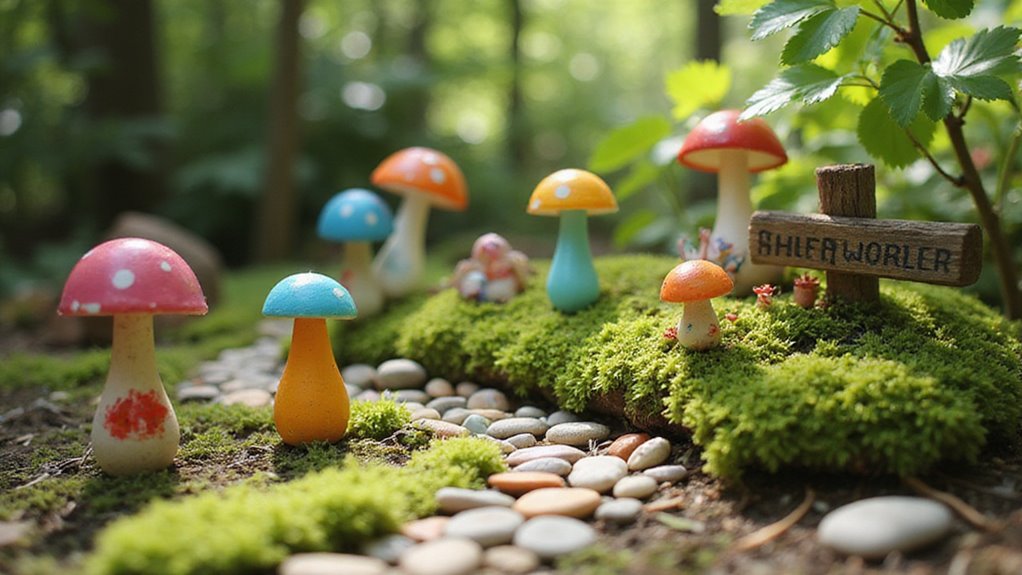
Though constructing magical buildings from twigs can animate our fairy gardens, it’s the addition of homemade fairy figurines that truly enhances the magic.
Air-dry or polymer clay can also be used to create our own fairy figurines, which we can make to any size or design we wish. So can bottle caps and buttons.
Natural items such as acorns and twigs harmonize in our gardens. We can sew or glue faces and wings on to felt or fabric scraps.
Be sure to include little hats or flower crowns to give each fairy its own personality!
Add Seasonal Decor for Variety
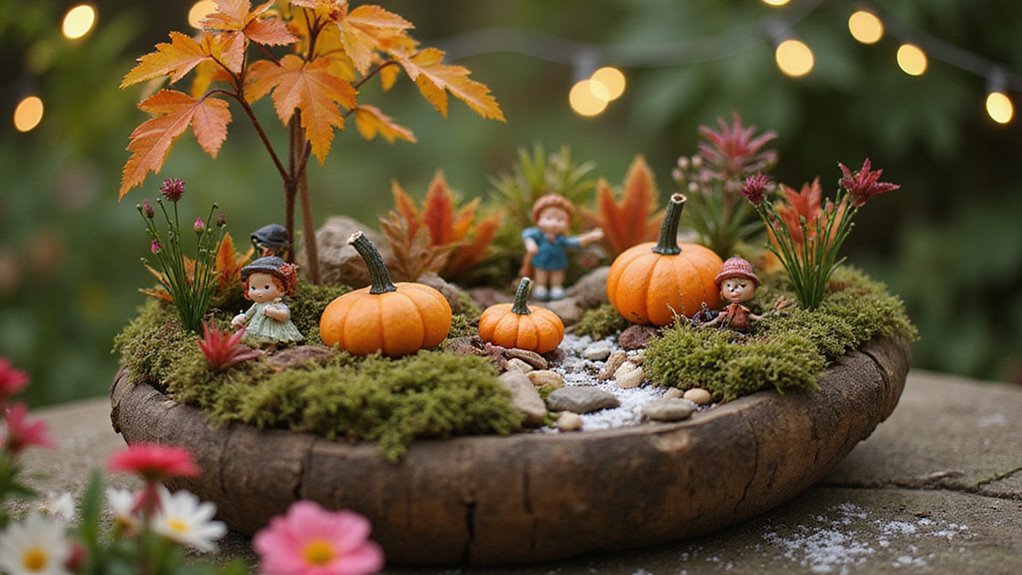
With the seasons changing, seasonal decorations can really liven up our fairy gardens and keep them fresh throughout the year.
With just a few elements each season can be represented in a sweet little vignette. Here are some ideas for seasonal decorations:
- In fall, make it feel warm and snuggly with small pumpkins and colorful leaves.
- For winter, you can sprinkle on tiny Christmas trees or miniature snowflakes.
- Change the flowers and the butterflies in spring.
These details do not simply adorn our gardens, they celebrate the beauty of nature’s cycles.
Utilize Crushed Glass for Water Features
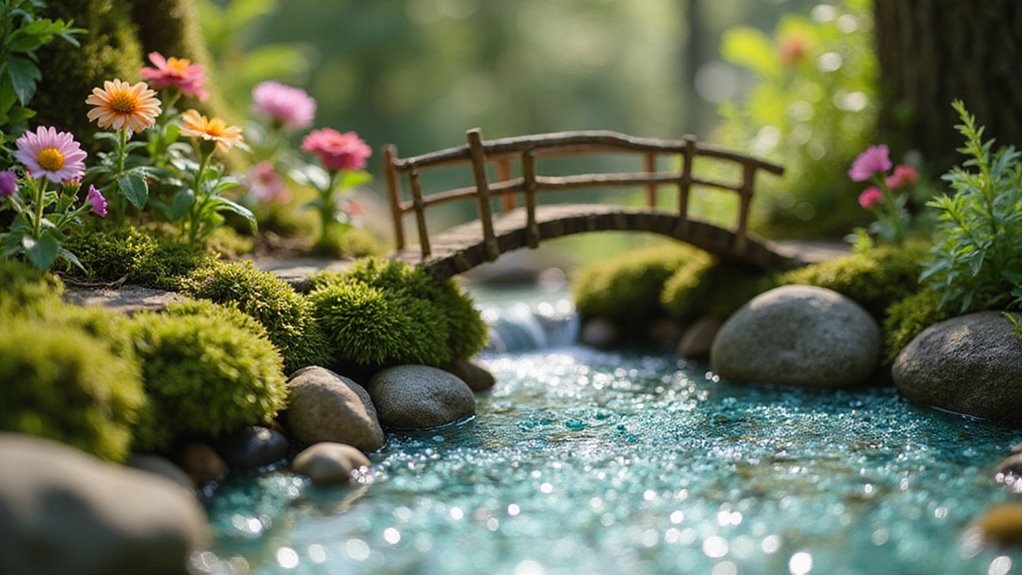
Crushed glass is one of the simplest materials to use to improve our fairy gardens by adding beautiful water features. The glittery substance resembles a pond or stream, which is magical.
If we are going to use crushed glass, let’s at least use non-toxic crushed glass so it is safe for our children and pets. The glass would be best held in place by a layer of sand or soil, which would not allow for movement.
Crushed glass comes in a variety of colors, too, and is available at craft stores so we can match our theme. It also works beautifully mixed with pebbles or small stones for added texture!
Create Fairy Signs With Craft Supplies

Fairy signs made out of craft materials can be delightful additions to our small gardens.
Here are some fun ways to personalize your DIY fairy garden.
- Try colorful bases for our signs made from popsicle sticks or wooden dowels.
- Cut out pieces of cardboard to write silly messages or names of fairies.
- Attach twigs and branches for rusticness, using twine.
We can also adorn our signs with little flowers, glitter or sequins.
Use Old Toys as Garden Accessories
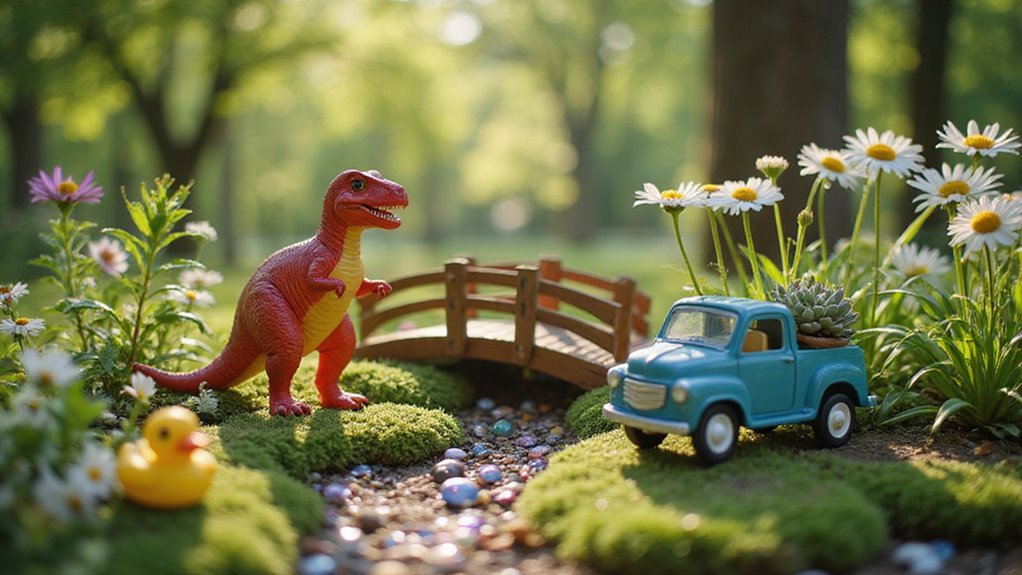
Old toys can be used as garden art, adding charming whimsy to our fairy gardens for little money.
Tiny toy animals, action figures or dolls can be recycled for a bit of whimsy. Before we set them out in our gardens, let’s scrub the toys clean to ensure they are safe for outdoor use.
We may even want to paint or decorate them with non toxic paint for a more cohesive look. Toy cars can make cute roads in our garden.
The use of vintage playthings is a frugal measure, but it also gives our gardens individuality and a sense of history, including our own.
Incorporate Recycled Household Items

Instead of succumbing to the urge to purchase new miniatures for our fairy gardens, using upcycled objects found around the house is a fun and green option.
To help get the juices flowing, here are a few starter ideas:
- Use empty glass jars or bottles as funny planters.
- Repurpose vintage teacups or saucers as delightful little pots.
- Make tiny fairy houses from cardboard egg cartons.
Gather Moss From Your Yard

Collecting moss from our yard can be one of the most satisfying and inexpensive ways to accessorize our fairy gardens. Moss grows in shaded, wet spots, creating a lush, organic look.
When we do collect, let’s be sure to do so from areas of abundance and not to harm our lawn’s ecosystem. We should carefully lift the moss with a small shovel or our hands, adding a bit of soil and roots for a good take.
Once collected, rinsing the moss washes away any dirt and pests, leaving us with a clean product. And moss holds in moisture, which is helpful for the other plants in our garden.
Let’s do this!
Make Your Own Soil Mix
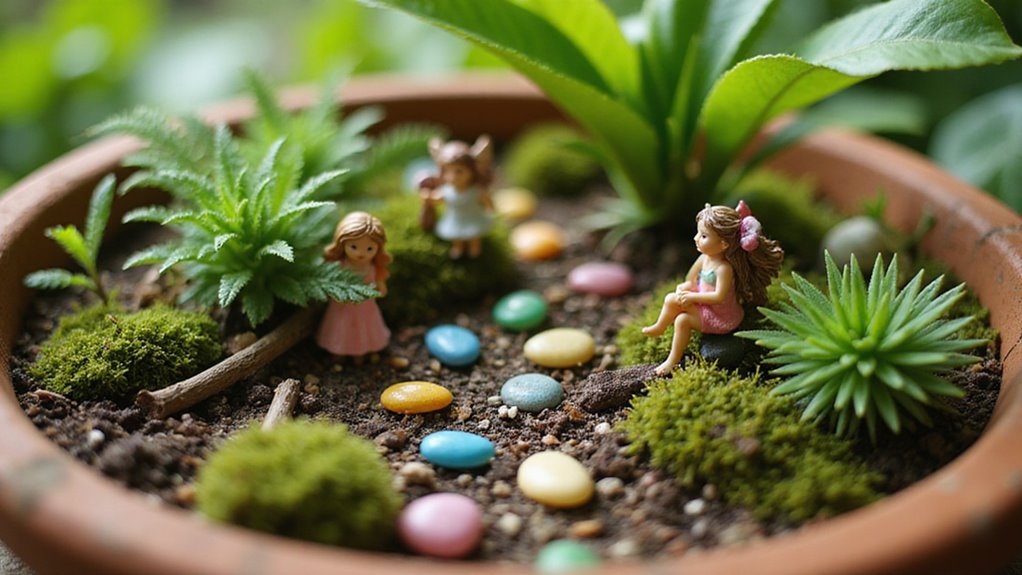
Making our own soil for a fairy garden can be a fun and cost saving activity. To ensure good growth, it is simple to create our own mix using a few ingredients:
Three parts potting soil and one part perlite or sand for drainage.
Add one part mushroom compost or worm castings to add nutrients.
For a more economical solution, combine existing garden soil with peat moss.
Create Multi-Level Gardens With Rocks
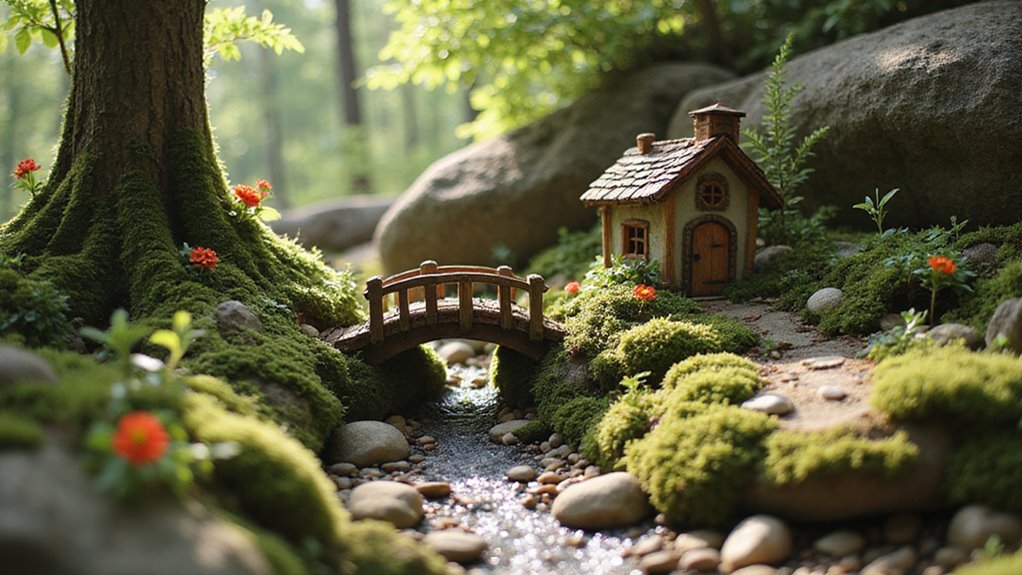
Building up instead of out is a fun way to create dimension in our tiny world and transform our fairy garden into a multi-level paradise.
Flat river rocks can be used to build stable platforms and stairways for multi-level gardens with rocks. We’ll add clayey soil which will help us to set larger stones, and will hold them in place as we build higher.
Smaller plants and trailing succulents planted around our rocks create more visual interest. We can also use coarse sand to make smooth paths between the levels, facilitating movements.
Let’s play with rock sizes and shapes to create interesting tiers and lift our garden!
Use Battery-Powered Lights for Ambiance

When dusk falls and our fairy garden starts to cast long shadows, battery-powered lights can quickly enhance the magic we’ve worked to create.
These lights also provide a bit of practicality in addition to the magic. Here are some tips to consider:
- Opt for miniature fairy lights in different colors and designs.
- Consider choosing models with a timer function that saves battery life.
- Add depth by placing the lights along pathways or inside fairy houses.
Share and Swap Miniatures With Friends
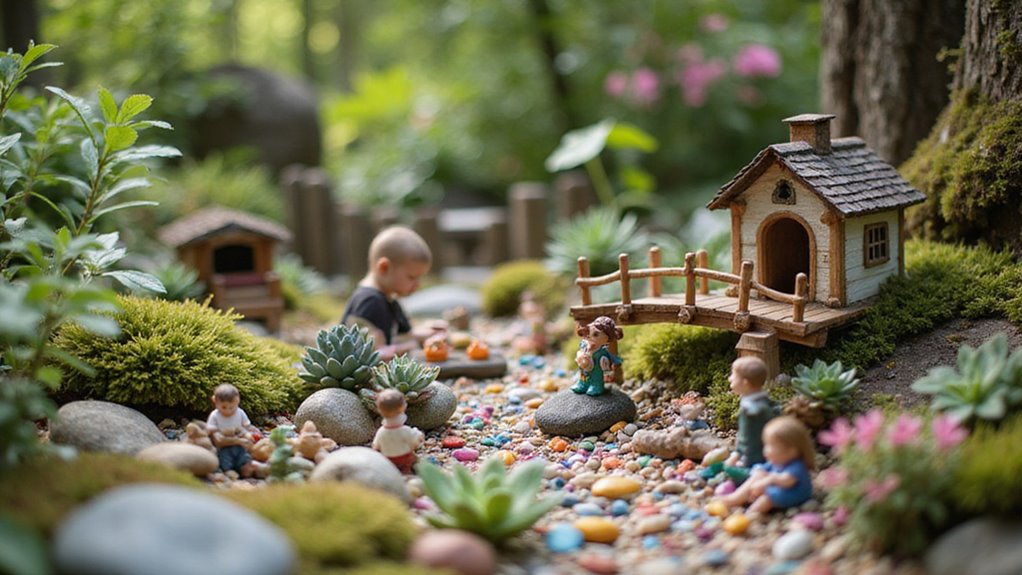
Perhaps the best part of collecting miniatures for our fairy gardens is swapping them with friends.
We can hold swap meets where everyone brings extra stuff and we find treasures for our gardens. Let’s use social media groups to find like minded folks and host themed swaps.
We could start a monthly “miniature of the month” challenge to inspire each other, sharing and swapping our creations. We will be able to see what we can trade with a shared inventory list of our miniatures.
Also, getting kids involved teaches them the joy of teamwork and sharing!
Explore Local Markets for Unique Finds

A search of local markets will often yield a wealth of one of a kind items to enliven our fairy gardens.
These markets are especially great for finding inexpensive mini plants and quirky decor.
Here’s what we should expect to see:
- Handmade decorations by local artisans
- Vintage containers from thrift stores
- Seasonal sales on fairy garden supplies

